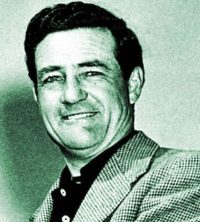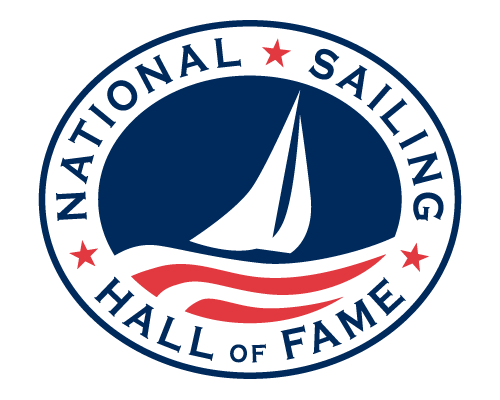
Briggs Swift Mr. C. Cunningham, Jr.
January 19, 1907 - July 2, 2003
Cincinnati, OH
Lifetime Achievement Award
Organizational Ability, Drive and Sportsmanship In 1958 the America’s Cup resumed after a 21-year hiatus. Four 12 meters including the 1939 Sparkman & Stephens design “Vim” along with three new yachts; “Columbia,” “Easterner” and “Weatherly” spent the summer racing in a series of trials for the right to defend the Cup against the British challenger “Sceptre.” “Columbia’s” syndicate recruited a champion car racer and yachtsman to be the helmsman. Carlton Mitchell author of, “Summer of the Twelves,” (Charles Scribner’s Sons, 1959) described the recruit, Briggs Cunningham, in glowing terms, “The quarterback – skipper and starting helmsman was to be Briggs Cunningham. Before the war, he had been a dedicated yachtsman, racing 6 and 12-meters impartially and with great success, as well as dominating the Atlantic Class. A quiet, shy man who brings to sport an organizational ability and drive which would make him a success in any field.” “Vim’s” crew pushed “Columbia” hard that summer, but Cunningham and his crack crew pre-vailed and easily defended against the slower “Sceptre.” Cunningham became a household name in the sailing world and was already well known in car racing circles. In fact, he was honored on the cover of “Time” magazine in the April 26, 1954 issue. The title of the accompanying article read, “Road Racer Briggs Cunningham: Horsepower, Endurance, Sportsmanship.” Later in life he was Inducted into the America’s Cup Hall of Fame (1993), the Motorsports Hall of Fame of America (1997) and the International Motorsports Hall of Fame in 2003. Both sports require a high level of athletic prowess and technological skill, and Cunningham had both. As a sailor he was a crew aboard “Dorade” when she won the 1931 Fastnet Race. He was clever with rigs, sail plans and yacht design. His device used to increase the tension on the luff of a mainsail has long been called the “Cunningham.” Mitchell noted in his book that, “Cunningham was totally intent on perfecting his boat and was part of the sweeping changes which have occurred in modern yachting. One can image how the quest to create a faster car might have been analogous to making a faster 12 Meter. Cunningham and Olin Stephens had a long association racing together offshore, in team races, and 6 Meters. In Stephens memoir, “All This and Sailing, Too,” (Mystic Seaport, 1999) he talks at length about his interest in car racing and learned a considerable amount of knowledge from Cunningham. So, it was no accident that the two sailors ended up together on “Columbia.” Cunningham also was a major contributor to Mystic Seaport and underwrote the expenses of the 1936 S &S designed schooner, “Brilliant” that has been used for sail training for young people over many years. Briggs Cunningham was a generous and long-time benefactor to many sailing endeavors. During the 1977 America’s Cup summer, Cunningham was one of eight members on the New York Yacht Club’s America’s Cup Selection Committee. At the age of 70 he was the senior member of the committee. As the 27-year-old tactician aboard “Courageous” that summer I got to know him fairly well. My impression was that he was generally quiet but always took a moment to give me some helpful advice. I have to laugh now because at the time he seemed kind of old, but as I write this essay, I am now 70, the same age he was back then. Being honored with a Lifetime Achievement Award and inducted into the National Sailing Hall of Fame is a fitting tribute to a gifted, vibrant, innovative, and successful sailor who set a powerful example by help-ing many other reach their goals on and off the water. ~Gary Jobson
Preserving America’s Sailing Legacy
Engaging Sailing’s Next Generation
Stay Connected to the National Sailing Hall of Fame
